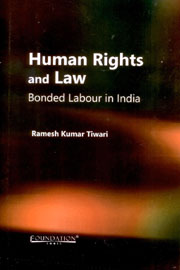Book contents
- Frontmatter
- Contents
- List of Tables
- Foreword
- Preface
- 1 Introduction
- 2 Slavery and Debt Bondage in British India: Policy and Implementation
- 3 Debt Bondage during the Post-Independence Period: Policy Developments
- 4 Problems in the Implementation of Bonded Labour System (Abolition) Act, 1976
- 5 Rehabilitation of Released Bonded Labourers
- 6 Judicial Intervention
- Conclusion
- Appendices
- Glossary
- Biographical Notes
- Bibliographical Essay
- Index
4 - Problems in the Implementation of Bonded Labour System (Abolition) Act, 1976
Published online by Cambridge University Press: 26 October 2011
- Frontmatter
- Contents
- List of Tables
- Foreword
- Preface
- 1 Introduction
- 2 Slavery and Debt Bondage in British India: Policy and Implementation
- 3 Debt Bondage during the Post-Independence Period: Policy Developments
- 4 Problems in the Implementation of Bonded Labour System (Abolition) Act, 1976
- 5 Rehabilitation of Released Bonded Labourers
- 6 Judicial Intervention
- Conclusion
- Appendices
- Glossary
- Biographical Notes
- Bibliographical Essay
- Index
Summary
Before discussing the problems in the implementation of the Bonded Labour System (Abolition) Act, it is important to deal with the question of the number of bonded labourers in India. This question was for the first time raised by Surendra J. Patel. He was very cautious in hazarding the numerical size of this type of agricultural labour due to lack of data both in the 1921 and 1931 Census. As in the Census of 1921 and 1931, the data regarding ‘farm servants’, i.e., bonded agricultural labourers and full-time free-wage labourers was grouped together. He was of the opinion ‘at best that the number of actual bonded labourers may not exceed three million. If so they form less than one-tenth of total agricultural labourers and about less than three per cent of the agricultural working population’. He also emphasized that the practice of bonded labour is mostly restricted to southern and central India, Bihar and Orissa. He further opined that the significance of the problem of bonded labourers should not be seen in the context of its numerical size but in the re-enserfment of a certain section of the agricultural population.
There has been a raging controversy since 1975 about the number of bonded labourers in India. This controversy is partly a result of the denial of the prevalence of bonded labourers by a large number of states and Union Territories.
- Type
- Chapter
- Information
- Human Rights and LawBonded Labour in India, pp. 60 - 88Publisher: Foundation BooksPrint publication year: 2011
- 1
- Cited by

